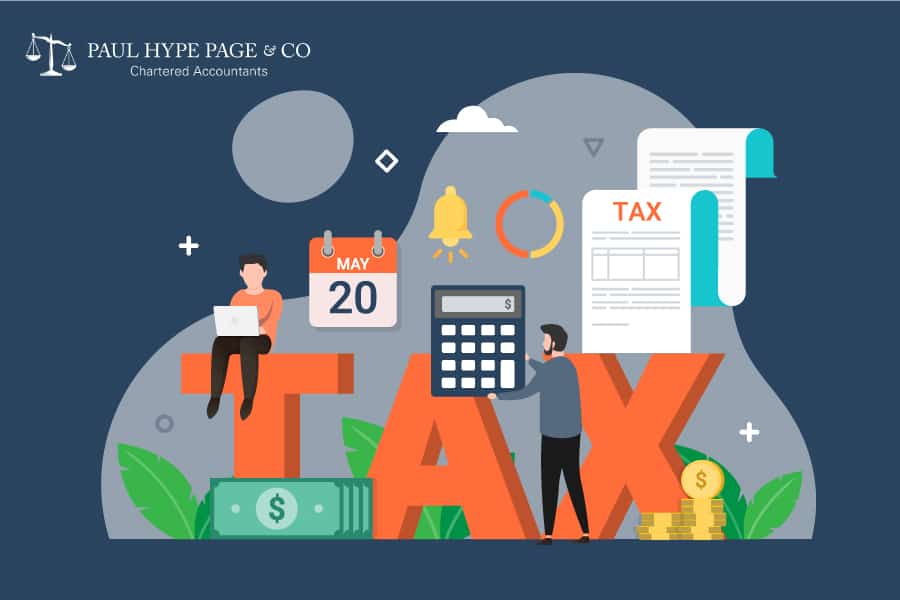Outline
- What is a Financial Statement?
- What are the Types of Financial Statements?
- What are the Key Terms Found in Financial Statements?
- Notes to the Financial Statements
- Preparation of Your Company’s Financial Statements in Singapore
- Prior to Filing Financial Statements
- How Should Consolidated Financial Statements be Filed?
- Which Business Entities are Exempted from Filing Financial Statements?
- Limitations of Financial Statements
- FAQs
Running a business in an efficient manner includes understanding important terms that will enable the company to maintain its financial stability. While accountants typically handle bookkeeping, understanding basic accounting terms is essential.
Familiarity with these terms is particularly crucial for new entrepreneurs embarking on their business journey. Let’s explore some essential accounting terms crucial for business owners to thrive!
What is a Financial Statement?
Financial statements serve as comprehensive snapshots of a business’s operations, encompassing key details including:
1. Statement of Financial Position (SFP)/Balance Sheet
This document encapsulates a company’s value, detailing its assets, liabilities, and owners’ equity (net worth) as of a specific date. It ensures that the company balances its assets, or the means to operate the business, with the business’s financial obligations and equity investment brought into the business, along with its retained earnings.
2. Statement of Comprehensive Income (SCI)/Profit & Loss Statement
This report elucidates a company’s annual revenue, derived from sales and offset by incurred expenses. Profit or loss is calculated via:
- Revenue – Cost of Sales = Gross Profit
- Gross Profit – Expenses = Profit / Loss.
3. Statement of Cash Flows (SCF)
This statement outlines how a business utilizes its cash, providing detailed insights into its operational cash flows. The nature of these cash flows may vary depending on the business’s operations.
Financial statements serve as vital communication tools within a business, guiding financial decisions and analyses conducted by the accounting department. Business owners and upper management summarize and present them to facilitate strategic decision-making and asset management.
What are the Types of Financial Statements?
There are four types of financial statements. Each has a different level of complexity, validity and cost.
Internally prepared
Internally prepared statements are prepared by a company without involvement of an external accounting professional. Interim financial statements are often internally prepared.
Notice to reader
Notice to reader (NTR) is the most basic type of financial statement prepared by an accountant. NTR usually relies entirely on the information provided by the company, with little or no validation or auditing of figures by the accountant.
Audited statements
Audited financial statements provide the highest level of assurance of the validity of the information.
Review engagement
This type of statement usually involves some validation by the accountant. This could include reviewing the company’s:
- Accounting practices
- Procedures for recording financial information
- Management controls
- Fraud management
What are the Key Terms Found in Financial Statements?
Below are explanations of common financial terms used in preparing and analyzing financial statements:
Assets
These are items owned by the company, including financial assets, current assets, fixed assets, and intangible assets.
Financial assets comprise
- Cash
- Bonds
- Investments
- Funds
- Deposits.
Fixed assets consist of
- Machines
- Plants & equipment
- Holdings
- Buildings
Intangible assets are identifiable non-monetary assets without physical substance which include
- Computer software
- Licenses
- Patents.
Liabilities
The company owes these obligations to other parties, categorizing them as long-term and short-term liabilities.
- Long-term liabilities encompass bank loans not due within a year
- Short-term liabilities include trade payables, rentals, loans due within a year, and accrued expenses.
Equity
Equity represents the residual interest in the company’s assets after deducting liabilities. It is calculated by subtracting liabilities from assets.
- For instance, if a business owner purchases a machine for $50,000 and has a remaining bank loan of $10,000, the owner’s equity is $40,000.
Income & Expenses
It is recorded in the Profit & Loss statement over a period. Income typically arises from the sales of goods and services, as well as other sources like:
- Bank interests
- Commission income
- Gains from non-current asset sales.
Businesses should disclose them separately under ‘other income’ in the P&L statement. On the other hand, expenses represent costs that a business incurs to generate income for the company. These include:
- Cost of goods sold
- Staff salaries
- Interest expenses or losses from non-current asset sales.
Cash Flows
This refers to the movement of money in and out of the business, categorized into three types:
- Operating cash flow involves cash activities related to net income, such as sales income and merchandise expenses.
- Investing cash flow pertains to activities involving non-current assets like long-term investments and equipment.
- Financing cash flow includes activities related to non-current liabilities and owners’ equity, such as stock sales, dividend payments, and long-term debt principal payments.
Notes to the Financial Statements
Notes to the financial statements disclose the assumptions made in preparing the statements and help interpret and analyze the information. They typically explain:
- Accounting policies, judgments and estimates involved in preparing the statements
- Supplemental information about certain line items, such as:
- A breakdown of accounts payable and receivable
- A revenue breakdown by segment or region
- Remaining economic life of assets
- Other important information, including:
- Risks to the business, such as exchange-rate risk or concentration risk
- Debt covenants
- Contingent liabilities
- Revenue and profit or loss of an acquired business or strategic investment
- Whether the statements were prepared on a cash or accrual basis
- Which accounting standards the company follows
Preparation of Your Company’s Financial Statements in Singapore
Companies include financial statements as obligatory documents in their annual returns and compliance filings. They submit these returns to ACRA (Accounting and Corporate Regulatory Authority), the national regulatory body for businesses in Singapore.
The primary purpose of annual returns is to provide potential partners, creditors, or investors with a clear understanding of the company’s current profitability. This transparency enables informed decision-making, planning, and budgeting for future financial years.
According to the Financial Reporting Standards of Singapore (FRS), a complete set of financial statements comprises:
- Statement of financial position as at the end of the period.
- Statement of profit or loss and other comprehensive income for the period.
- Statement of changes in equity for the period.
- Statement of cash flows for the period.
- Addition notes, comprising significant accounting policies and other explanatory information.
Prior to Filing Financial Statements
After preparing financial statements, directors must take several steps before filing them with ACRA. Directors must ensure that they conduct a proper audit within 14 days, attaching the auditor’s report to the financial statements before sending them to shareholders at the Annual General Meeting (AGM).
How Should Consolidated Financial Statements be Filed?
- File using the BizFinx Preparation Tool to map required items to appropriate tags in ACRA’s taxonomy.
- The financial statements must meet certain minimum requirements:
- Include a text block element covering the full set of statements sent to shareholders.
- Incorporate detailed elements for statutory reports, income statement, balance sheet, cash flow statement, and disclosure notes.
- Use the BizFin Multi-Upload Tool to validate the financial statements before submission to ACRA.
- File the company’s annual returns before the deadline
Which Business Entities are Exempted from Filing Financial Statements?
Certain business entities are exempted from filing financial statements:
- Sole proprietorships
- Partnerships (including limited partnerships)
- Solvent Exempt Private Companies (EPCs) with a maximum of 20 shareholders.
- Dormant unlisted companies that have been dormant since formation or since the end of the previous financial year.
Although sole proprietors and partnerships are exempt from filing financial statements, they still have an obligation to maintain proper records of accounts and prepare a Statement of Account at the end of each accounting period.
Limitations of Financial Statements
Although financial statements provide a wealth of information on a company, they do have limitations. Investors often interpret the statements differently, so they frequently draw divergent conclusions about a company’s financial performance.
For example, some investors might want stock repurchases, while others might prefer to see that money invested in long-term assets. A company’s debt level might be fine for one investor, while another might have concerns about the level of debt for the company. Therefore, when analyzing financial statements, it’s important to compare multiple periods to determine any trends and compare the company’s results to its peers in the same industry.
Lastly, financial statements are only as reliable as the information fed into the reports. Documentation frequently shows that fraudulent financial activity or poor control oversight leads to misstated financial statements intended to mislead users. Even when users analyze audited financial statements, they must place a level of trust in the validity of the report and the figures being shown.
FAQs
If the financial statements do not comply with the SFRS or do not present a true and fair view of the company, the directors of the company will be guilty of an offence and may be fined up to $50,000.
Therefore, it is recommended that the personnel preparing financial statements should be officers with relevant experience (such as qualified accountants or company secretaries).
Although ACRA does not prescribe who is to file or prepare the financial statements, it is the prerogative of the directors to ensure the quality of the financial statements and that they are not erroneous.
Both public and private companies (limited or unlimited by shares), except EPCs, are required to file the full set of financial statements mentioned above. This should be done in the eXtensible Business Reporting Language (XBRL) format.
Before the financial statements are filed with ACRA, the directors must ensure that the financial statements are duly audited within 14 days before being sent to the shareholders at the AGM, with the auditor’s report attached to the financial statements.
About The Author
Share This Story, Choose Your Platform!
Related Business Articles






